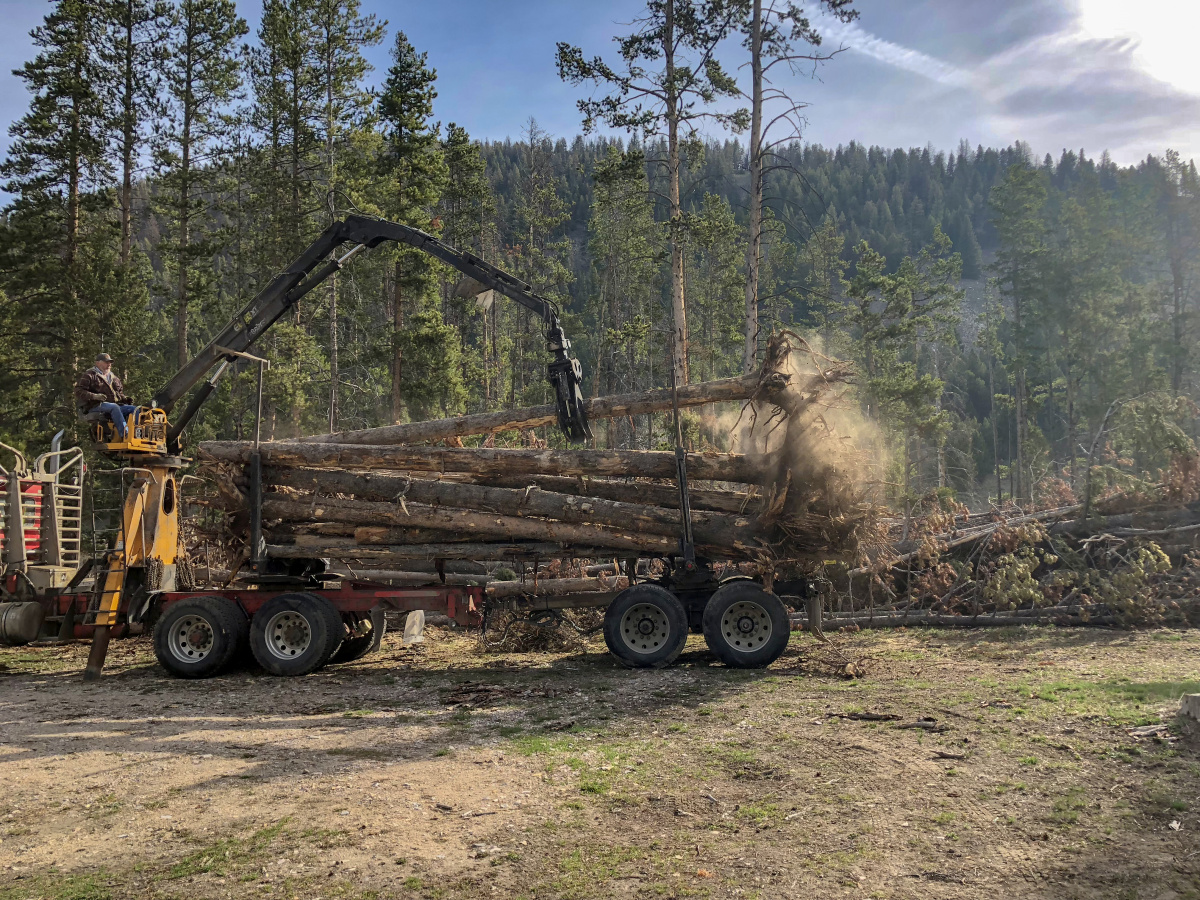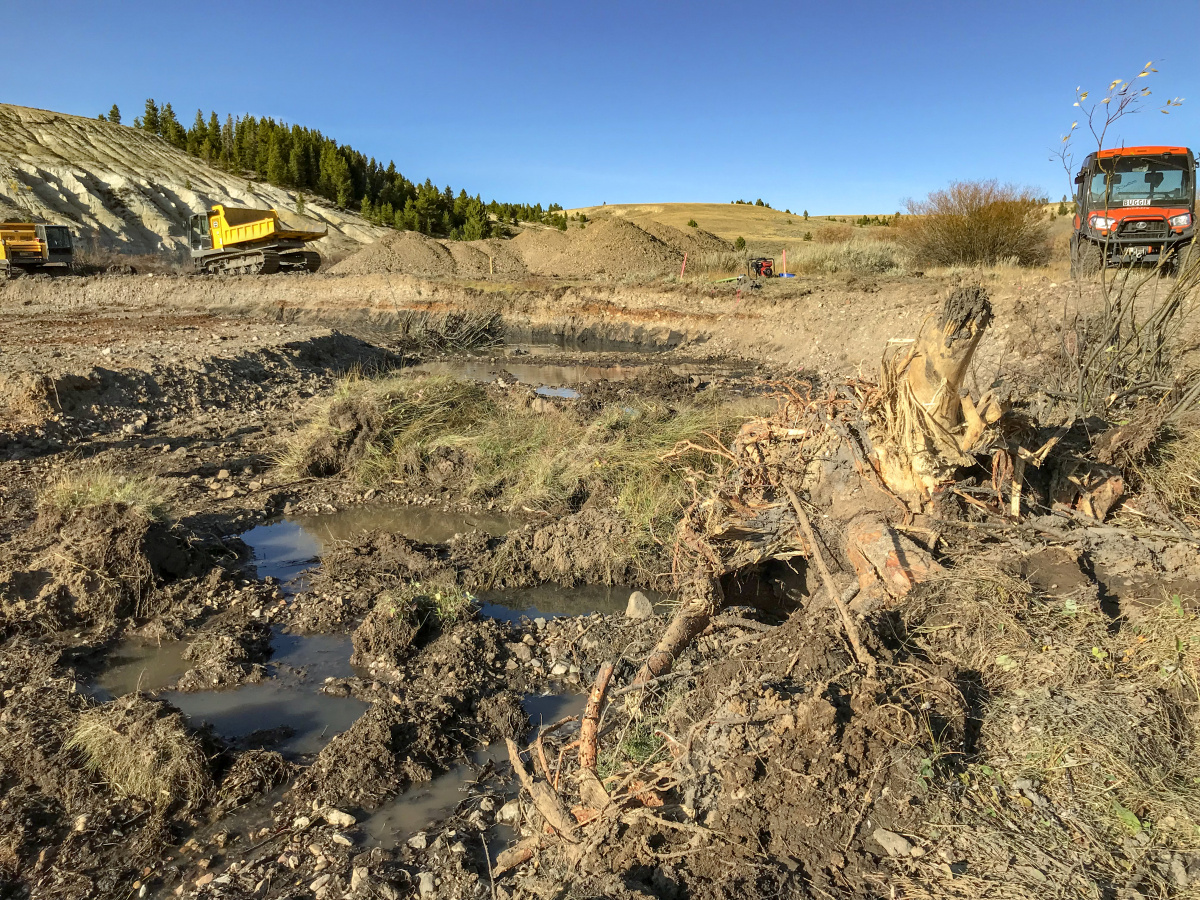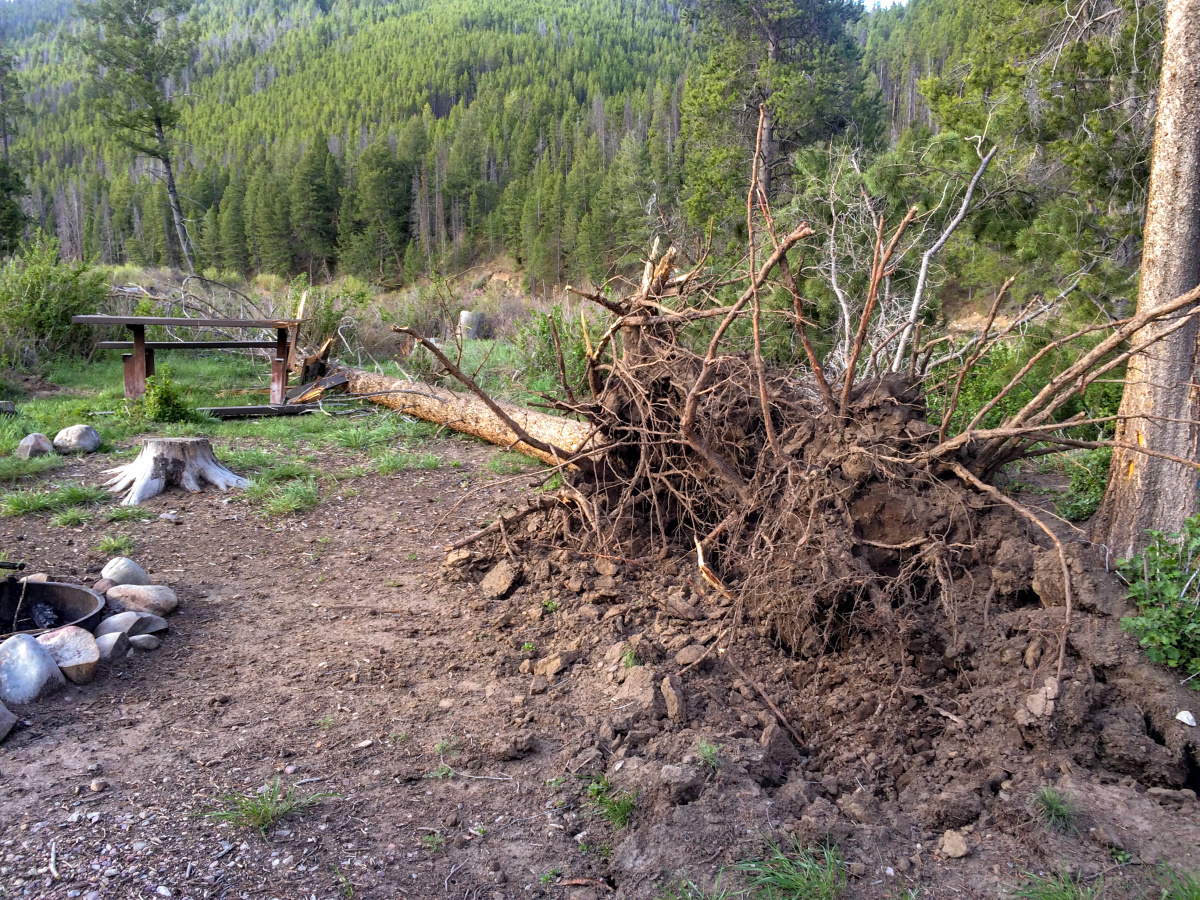You are viewing ARCHIVED content published online before January 20, 2025. Please note that this content is NOT UPDATED, and links may not work. Additionally, any previously issued diversity, equity, inclusion or gender-related guidance on this webpage should be considered rescinded. For current information, visit https://www.blm.gov/blog.
Butte FO collaborates to convert root wads to fish habitat
Story by Michael O’Brien, Forester, Butte Field Office

Haggin Wildlife Management Area.
(Photo by Michael O’Brien)
In the past 20 years, insect and disease activity has been on the rise in the western United States and Canada’s forests. Periodic infestations are natural elements of the landscape, but past management decisions and changing forest conditions have elevated them to epidemic levels.
In Montana, one of the most impactful insects has been the mountain pine beetle (MPB) (Dendroctonus ponderosae). The most recent MPB epidemic started in the 1990s and peaked around 2006-2008.
The beetle has had a significant ecological force at the landscape level, causing high levels of mortality in mature timber stands. Within Montana, this epidemic spread across more than six million acres, or 23 percent of the state’s 25.6 million acres of forest on private, state, and federal lands. Tree mortality was greater than 90 percent in some timber stands within the BLM’s Butte Field Office.
After the epidemic, many forestry projects designed to address the MPB mortality have been completed and continue to be implemented by land owners and agencies within Montana (BLM, United States Forest Service, Montana Department of Natural Resources, Montana Fish Wildlife and Parks, private landowners, and others).

Creek stream channel to stabilize and protect stream
banks and create fish habitat.
(Photo by Ben La Porte, Big Hole Watershed Committee)
The Butte Field Office ran into a rather unique challenge and had to get creative when treating some of the high-use campgrounds within the Big Hole River Valley, known for blue-ribbon trout fishing and spectacular high mountain scenery. Determining the right course of action was complicated. BLM specialists had to look at many issues, including the safety of campground users, maintaining the integrity of campsites, retaining wildlife habitat and movement corridors, and visual resources. Hundreds of large, mature lodgepole pine trees had to be removed.
Residual live trees presented one of the largest issues. As the stand was thinned, the shallow root systems on the live lodgepole pine were not able to withstand spring moisture and high winds. Those wind-thrown trees were hazardous to both campground users and campground facilities. When the trees inevitably toppled, their root wads came up as well, creating large holes and a mess to clean up.
Beginning in 2011, two timber sales were used to help remove hazard trees and clean up the sites. They provided sawlogs that went to local lumber mills, posts and poles for fencing, houselogs, logs to be carved into bears (which the carver donates to charities around Butte), and plenty of firewood.
After the timber sales, BLM staff spent time each summer cleaning up the sites and removing root wads from wind-thrown trees. Residual down trees were cut up and stacked for firewood for campground users.
“This was a big hit,” said Michael O’Brien, BLM Forester with the Butte Field Office and Project Lead. “Folks really appreciated having easily accessible firewood throughout the summers.”
Although the firewood was a big hit, there was still one BIG issue. What to do with all the root wads? During the summer of 2017, while O’Brien was visiting his in-laws in Salmon, ID, an idea came to mind. The family owns a small mill in Salmon and they had been selling a lot of short logs with root wads attached for different fish habitat projects.

damaging a picnic table.
(Photo by Michael O’Brien)
“I knew there were a number of different stream restoration projects around the Butte area and once the idea had been presented to the field office staff, it didn’t take much time at all to find a home for the root wads,” O’Brien said.
Kelly Scarbrough, Supervisory Outdoor Recreation Planner with the Butte Field Office, had been working with the Big Hole Watershed Committee and they quickly accepted the donation.
“This was a great opportunity to support multiple resources and strengthen local partnerships,” Scarbrough noted.
Project leads on both sides were excited for the donation, all the BLM had to do was transport the root wads to a useable location.
In 2018, a local logger provided a self-loading log truck to transport the root wads. The State of Montana provided a location within the Mount Haggin Wildlife Management Area for the material to be stored.
In the fall of 2019, the root wads finally found their home on the Lower French Creek sediment reduction project. This project is a critical piece to a larger initiative where the Big Hole Watershed Committee is working with the BLM, Montana Fish, Wildlife and Parks, Bureau of Reclamation, the Montana Department of Environmental Quality, The Nature Conservancy, Morrison-Maierle, Inc, and Watershed Consulting to establish a native fish stronghold for Westslope cutthroat trout and the Arctic grayling along more than 40 miles of the Big Hole River’s headwater tributaries.
In the 1860s, extensive placer mining in the French Gulch drainage left the area in a highly degraded state. The project’s objective was to remove placer tailings from the floodplain, re-establish natural stream meanders, and reconnect the floodplain and wetlands to reduce sedimentation.
“These root wad structures are a vital piece of the project,” said Ben LaPorte, Program Manager for the Big Hole Watershed Committee. “They are being used to protect the streambanks and give stabilization to the outer meander bends. They have all been placed strategically to help decrease the stress on the banks, especially in high-flow events. These structures provide good fish habitat, especially for juveniles. They also help with sediment and debris catchment. The root wads and logs that the BLM donated have been the most robust, construction friendly logs we have available. Thank you so much for the donation!”
Last autumn, O’Brien watched the logs and root wads being placed in Lower French Creek, the end of a nine-year project.
“This was a great project to see so many of the aspects of what the BLM does,” he said. “We were able to improve the safety of our campgrounds, provide jobs for loggers and timber products for local industries, and in the end contribute to the restoration of one of our most valuable resources. This is certainly one of those feel-good kinds of projects where thinking outside of the box has provided us with more benefits than I would have ever initially thought. This was my first timber treatment in the Butte Field Office and is a project I am sure I will reflect on throughout my career.”
For more information on the Big Hole Watershed Committee and this project visit: http://bhwc.org/projects/french-gulch-restoration/
Related Stories
- Monument map earns ‘finalist’ honors in global GIS awards
- BLM Fire and National Conservation Lands managers collaborate to meet shared goals
- Recreation for all: Accessibility on Montana-Dakotas public lands
- North Central Montana District employees celebrate new adoption
- BLM Billings Field Office works with state agencies in Montana to conduct bat surveys
